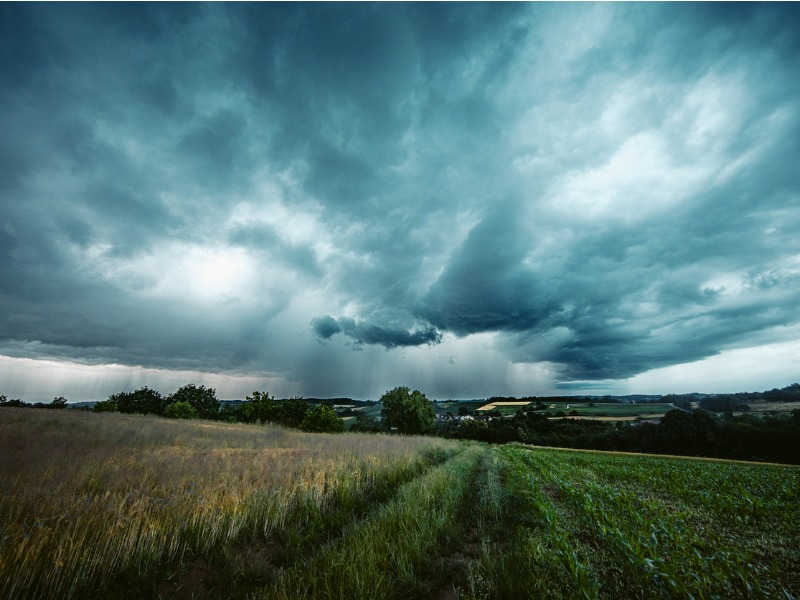
First Cat of the year predicted after powerful “derecho” storm
May 24, 2022 by Alyssa DiSabatino

Print this page Share
A series of powerful thunderstorms that affected Ontario and parts of Quebec this weekend is already being billed by the industry as the first major Cat of 2022.
And while industry experts anticipate a large number of insured damages, one predicts the storm may result in a lot of “hidden damage.”
Labelled a “derecho” by forecasters (essentially, a widespread, long-lived wind storm associated with a band of rapidly moving showers or thunderstorms), the event left roughly 1,000 kilometers of damage in its wake and at least 10 deaths. As a result, Glenn McGillivray, managing director at the Institute for Catastrophic Loss Reduction, says there will be a “mix” in severity of claims.
“Typically speaking, storms like this can cause a large number of smallish claims,” McGillivray says. “We certainly are seeing that. But we’re also seeing losses on the high end as well. We’re seeing roof losses, buildings collapsing, and things of that nature.
“I do think there’s going to be a really high degree of uninsured loss here, because you’re going to get a lot of people with maybe minor roof damage and things like that, where either the damage is not going to exceed the deductible, or the person will feel that it’s not worth filing a claim for. So there’s going to be a lot of hidden damage, because it’s not going to show up in the numbers.”
One independent claims adjuster says thousands of their insureds have suffered losses as a result of the storm.
“Our intake volume has remained steady since the weather event passed through the affected areas on Saturday afternoon,” Heather Matthews, chief client officer at Crawford & Company Canada, says in a written statement. “Our teams are working hard to process thousands of calls and online claims reports from the affected areas.
“Crawford teams are most active in heavily-damaged areas, including in Durham region and the Ottawa area,” Matthews writes.
Hydro One crews have restored power to more than 479,500 customers affected by the storms. More than 150,000 remain without power as of Tuesday morning, according to a Hydro One press release.
Hydro-Quebec reported about 133,000 customers from Gatineau to Quebec City were without power Tuesday morning, down from a peak of more than 550,000.
Damage includes more than 1,400 broken poles, 300 broken crossarms, nearly 200 damaged transformers, and countless downed trees and branches. In the Ottawa area, Hydro One says their crews are rebuilding three transmission towers that were damaged by the storm.
David Repinski, CEO at CRU Adjusters, predicts claims will be slow to come in, thanks to the power outages.
“A lot of cell towers were [downed] or out of repair. So that’s going to retard claim reports a little bit,” he adds. “Between the holiday weekend and lack of power, lack of cell service, I think claim reports are going to be perhaps a little slower to come in initially.”
While Repinski says CRU’s adjusters haven’t begun to make visits, they have received claims reports outlining heavy property damage.
“I haven’t heard any reports of any hail or anything,” he says. “It’s just wind. It’s going to be property damage to homes and businesses across a pretty wide swath.
“We’re going to have damage to shingles and roof damage and other structures in and around homes. But [with] the loss of power, you’re going to have a lot of food spoilage and things like that as well.”
Alongside property damage claims, Crawford and Company confirms they are seeing food spoilage losses.
“We are seeing a broad range of losses from fences down, to automobiles crushed from falling trees and hydro poles to significant damages to homes and businesses from the wind and tree impact,” Matthews writes. “Losses such as food spoilage, from people not having power for an extended period, are also starting to come in.”
Matthews says Crawford and Company’s adjusters have been working through an “increasing number” of claims files, and the firm will be activating their Cat resources from the U.S to respond to the influx.
Insurance Bureau of Canada (IBC) has deployed its virtual Community Assistance Mobile Pavilion (CAMP) to assist residents impacted by the storm. Since insurers serve as “second responders” in the recovery period after catastrophe strikes, IBC’s virtual CAMP is staffed with trained insurance industry personnel who are on hand to consumers’ questions about their home, business, or vehicle insurance policy.
Feature image by iStock.com/SimonSkafar
